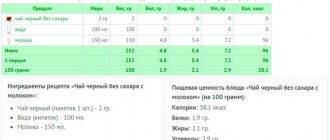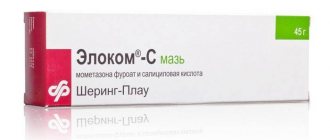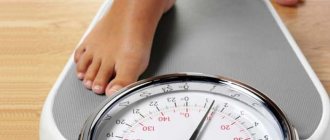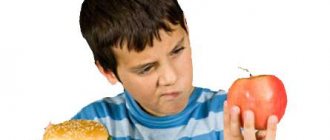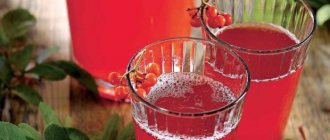Is it possible to lose weight at 10 years old? This question is asked by many parents whose children differ significantly in weight from their peers. How to lose weight for a 10 year old child at home? The topic may also be of interest to the children themselves, who notice their differences from those around them.
First of all, this problem should concern parents. They will need to take into account many factors, properly adjust the diet, organize day planning and provide the child with sufficient physical activity.
Important! Due to the fact that a developing body needs the entire range of nutrients, putting a child on a strict diet is strictly prohibited.
Thus, choosing the optimal diet can be difficult. There are general recommendations that can help a child lose weight at a gentle pace, with minimal risk to health.
About the importance of proteins
Animals
Growth, metabolism, immunity and a number of other functions of a young body largely depend on proteins supplied with food. Whether of plant or animal origin, they are equally important for 10-year-old schoolchildren. The main sources of animal (complete) proteins include meat, 100 g of which contains from 19 to 21 g of protein. Of particular value are rabbit meat, beef, veal, chicken and turkey.
Complete proteins come from fish dishes, milk, lactic acid products, hard cheese, cottage cheese and eggs. They are absorbed by the body by 70-90%. At the same time, egg white is absorbed almost 100%, which is valuable due to the presence of amino acids essential for humans.
It should be remembered that the digestion of meat products requires sufficient time and secretory activity of the digestive system. For this reason, nutritionists advise including meat on the menu in the first half of the day.
Vegetable
The diet of a 10-year-old primary school student should also contain proteins of plant origin (they are sometimes called incomplete) - about 40% of all proteins consumed. They are absorbed by only 40-70%. The following leguminous plants are supplied in maximum quantities:
- soybean (34 g per 100 g of product);
- peas;
- lentils;
- peanut.
A high amount of protein (from 11 to 13 g per 100 g of product) contains pasta, rolled oats and buckwheat. Vegetables that have undergone heat treatment by boiling or stewing are distinguished by accessible and quickly digestible protein.
Insufficient protein content in the diet of primary school children leads to growth retardation, suppression of the functions of the endocrine glands and a lag in sexual development from their peers.
Sample diet menu for a week
Dieting as a teenager doesn't have to be a burden. So that during the period of weight loss the girl does not feel the desire to eat any of the forbidden foods, the menu needs to include as many dishes as possible made from her favorite foods. Parents can make up their own diet, but they must listen to the recommendations of nutritionists. The table shows an approximate diet menu for teenagers 14 years old, designed for 1 week.
| Day of the week | Menu |
| Monday | Breakfast: 150 g low-fat cottage cheese, 3-4 biscuits, a cup of tea. Lunch: 150 ml of vegetarian borscht with rye bread toast, 100 g of buckwheat porridge with a piece of stewed veal, 200 ml of apple juice. Afternoon snack: orange, a handful of any nuts, 200 ml of mineral water. Dinner: 100 g of boiled lentils, a glass of kefir. |
| Tuesday | Breakfast: 2 soft-boiled eggs, an apple, a sandwich with unsweetened curd, a cup of tea. Lunch: 150 ml of cabbage and green pea soup, toast, 100 g of rice with fish baked in foil, pomegranate juice. Afternoon snack: 100 g raspberries, any dried fruit, a cup of tea. Dinner: jacket potatoes (3 pieces) with vegetable salad, 200 ml of plain yogurt. |
| Wednesday | Breakfast: 200 g of oatmeal with milk, tea with biscuits. Lunch: 150 ml of cauliflower and carrot soup with the addition of 1 tsp. low-fat cream, 100 g eggplant ragout, steamed beef cutlet, 200 ml grape juice. Afternoon snack: 2 baked apples with raisins, mineral water. Dinner: 150 g cottage cheese casserole, 200 ml milk. |
| Thursday | Breakfast: 200 g of pumpkin porridge, a sandwich with curd mass, a cup of tea. Lunch: 150 ml cabbage soup with toast, 100 g mashed potatoes with boiled chicken breast and 2 tbsp. l. grated beets, 200 ml apple juice. Afternoon snack: a glass of banana and orange smoothie, 3 biscuits. Dinner: zucchini baked with rice and meat, 200 ml of kefir. |
| Friday | Breakfast: 200 g of buckwheat porridge with milk, toast with a slice of low-fat hard cheese, a cup of tea. Lunch: 150 ml of mushroom soup, 100 g of navy pasta, 200 ml of carrot juice. Afternoon snack: 1 pear, a handful of nuts, mineral water. Dinner: white omelette of 2 eggs, 200 ml of fermented baked milk. |
| Saturday | Breakfast: 200 g of milk semolina porridge, 3-4 biscuits, a cup of tea. Lunch: 150 ml of vegetable soup with the addition of 1 tsp. low-fat cream, 100 g of mashed potatoes with boiled fish, 200 ml of grapefruit juice. Afternoon snack: salad of cucumbers, bell peppers and tomatoes with toast, a cup of tea. Dinner: 150 g of cottage cheese casserole with dried apricots, a glass of plain yogurt. |
| Sunday | Breakfast: 200 g of rice porridge, a sandwich with hard cheese, tea. Lunch: 150 ml of zucchini soup, 100 g of buckwheat porridge with steam cutlet, grape juice. Afternoon snack: apple, dried apricots (5-6 pieces), unsweetened peach compote. Dinner: 2 pancakes with cottage cheese, a cup of fermented baked milk. |
Fats – vegetable and animal
Fats are active participants in metabolic processes, helpers in the absorption of fat-soluble vitamins and energy suppliers for the child. The diet of a 10-year-old schoolchild should include animal sources (60% of total fat) and plant sources.
The best option would be a menu where animal fats are represented by butter, and vegetable fats are represented by unrefined sunflower or cold-pressed olive oil. Moreover, in its raw form, vegetable oil should contain at least 30% (this is approximately 5 g).
The following products can partially fill the need for fats:
- fatty fish;
- nuts;
- beans;
- egg yolk.
An insufficient amount of fat in children's menus causes poor weight gain, provokes a number of skin diseases, negatively affects the functions of the digestive system, and weakens the immune system and memory.
Tips for parents
Basic recommendations for parents of overweight children:
- One piece of candy will not make a person gain 5 kg, but it will trigger a number of bad processes, provoke insulin spikes, overeating, and awaken taste buds. Therefore, it is better to treat your child with fruits, nuts, carrots;
- On holidays, breakdowns occur not only in adults. It is important to immediately switch to a diet for an overweight child the next day; there is no need to continue consuming harmful, forbidden, garbage food;
- Your child should always have a healthy snack with him. There is no need to bet that your son/daughter will go into the store and buy a banana or an apple. Most likely, it will be crackers, chips, a pie;
- there is no need to force the child to play sports or active games when the parents are lying on the sofa or sitting at the computer. Only your example is contagious.
Important! The article is for informational purposes only. Before using the diet, you should consult your doctor.
Carbohydrates
Not a single process in the body can occur without carbohydrates.
Each cell can perform its function only if there is energy, be it breathing, muscle work or mental activity. Suppliers of the necessary energy are carbohydrates, the amount of which in the diet exceeds the content of proteins and fats by 4 times. Carbohydrates are:
- fast (simple);
- slow (difficult).
Simple
This is sugar, which is rapidly converted into glucose and used by the body to ensure vital functions and physical activity. If the level of glucose in the blood is elevated, then part of it in the form of glycogen will be deposited in the liver, and part of it, “in reserve”, will turn into fat cells.
Among foods with fast carbohydrates, the most popular among children are chocolates, lollipops, sweet drinks, cakes, and pastries. Sweet “harmful” foods when consumed regularly lead to excess weight and pancreatic diseases.
At the same time, we must not forget that simple carbohydrates can quickly restore a child’s strength after emotional and physical stress.
Complex
Complex carbohydrates include polysaccharides with slow transformation and absorption of glucose in the intestines. The released energy is spent on the needs of the body, and metabolic processes are normalized at the same time.
In addition, foods high in polysaccharides are sources of valuable fiber necessary for the growth of normal intestinal microflora.
Complex carbohydrates are found in vegetables and durum wheat pasta. They are found in sufficient quantities in buckwheat, brown rice, coarse flour bread and legumes.
Causes of obesity
The reasons why children become obese can vary. Often these are habits borrowed by children from their parents:
- eating a large meal just before bedtime,
- a light snack instead of a full breakfast,
- eating while watching TV,
- eating to reduce the effects of stress,
- frequent consumption of fried and fatty foods,
- lack of exercise, etc.
To decide how to lose weight for a child, sometimes it is enough to change the daily routine.
The problem of losing weight is most acute for girls.
Excess weight not only harms health, but by the age of 14-15 psychological complexes may appear.
Vitamins and minerals
The maximum amount of vitamins, micro- and macroelements comes from fruits and vegetables. The diet at the age of 10 years should include these products raw, after heat treatment, and also in the form of juices.
Calcium necessary for bone growth is found in dairy products:
- cottage cheese;
- cheeses;
- milk;
- kefir.
Considering that a growing body constantly needs calcium, milk and products based on it are consumed in an amount of 500 g daily. If for some reason this is not possible, you should consider adding vitamins with calcium to your diet.
Iodine is necessary for normal development, increased efficiency and intelligence. It is included in the children's menu with fish (tuna, cod, navaga, sea bass, flounder) and seaweed. The trace element is present in small quantities in nuts, eggs, milk, tomatoes, sorrel, and grain crops.
Sources of fat-soluble vitamins A and D:
- chicken and quail eggs;
- butter;
- liver;
- sour cream;
- kefir.
Vitamin C is rich in vegetables, fruits and leafy greens, and rose hips as a decoction.
The main foods containing vitamin E are: vegetable oil and legumes.
What substances are found in the liver that are beneficial for children?
How to calculate the normal weight of a child?
We measure height and subtract 100 from the resulting number. For example, with a height of 1 meter 50 cm, the optimal weight would be 50 kg. You should not panic if the “skew” is 2-3 kg.
They will go away quickly if you review your diet and add physical activity.
Video answer from a specialist and famous fitness trainer: “How to lose weight as a teenager”:
A few more tips for teenagers from a fitness trainer:
A few words about balance
A balanced diet is the correct balance of all menu components. To correctly prepare the daily diet of a 10-year-old child, you should use the recommendations of nutritionists:
- the ratio of proteins, fats and carbohydrates in the daily set of products is 1:1:4;
- proteins: animal origin – 50-60%, vegetable origin – 40-50%;
- fats: animal – 60%, vegetable – 40%;
- amount of carbohydrates: 420-430 g per day, of which 15% are simple carbohydrates (sugar 50-60 g, confectionery 10 g);
- total calorie content: 2200-2300 kcal;
- Breakfast and dinner account for 25% each, lunch – 35%, afternoon tea – 15%.
How to eat
If you need to create a menu for a child 10-13 years old at home, then you must adhere to the following recommendations:
When choosing a way to lose weight for a 13-year-old girl, remember that you need to lose weight slowly. Avoid “quick-fix” diets that tell you to lose weight in a week.
- When solving the problem of how to lose weight for a 12-year-old girl, exclude fried, smoked, and overly salty foods from the diet.
- Steam, boil or bake foods. For salad dressings, use yoghurt rather than mayonnaise or ketchup.
- When deciding how to lose weight for a 13-year-old girl, offer your child honey or fruit, not cakes or sweets.
- Carbonated drinks will successfully replace compote made from dried fruits, or liquids based on fat burners, for example, goji berries, which will act as weight loss stimulants, and natural juices.
Regularity is important
Maintaining hourly intervals between meals in a primary school child contributes to the normal functioning of the digestive organs, adequate production of gastric and intestinal juices, good absorption of nutrients and optimal balance of intestinal microflora. Eating four meals a day allows the body to absorb more than 80% of the necessary ingredients from the food composition.
A child aged 10 years is recommended to eat at intervals of 4 hours at the same time (with a maximum error of no more than 30 minutes). Dinner time should be planned at least 2 hours before bedtime.
Garbage products
Here is a list of foods that children love. But it is from them that they get fat; nutritionists unofficially call all this “junk food.” It gives nothing but empty calories, a deficiency of nutrients. Even in a child who eats well, the immune system is weakened due to such nutrition, he often gets sick, is lethargic, and may be irritable. A diet for children requires the complete exclusion of junk foods.
List of the most harmful products:
- chips, snacks, crackers, instant noodles;
- lemonade, reconstituted juices;
- sausages, sausages, bacon, smoked meats;
- low quality chocolate, multi-ingredient sweets with fillings;
- energy drinks, caffeinated drinks;
- margarine, products with palm oil;
- hot dogs, French fries, hamburgers and other fast food.
